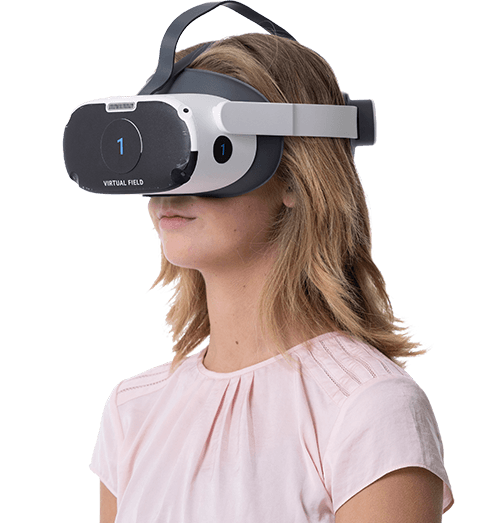 |
| There were fewer defects detected by the VR perimeter compared with the Humphrey Field Analyzer when using their respective commercially available normative databases. Photo: Virtual Field. Click image to enlarge. |
Consumer-friendly technologies such as tablets and virtual reality (VR) headsets have been proposed to address the limitations of in-office equipment. Despite their own limitations, VR testing platforms may play a role in perimetric testing in clinical practice by possibly improving accessibility in low-resource settings. With increasing demands on office time and space and an increasing interest in home monitoring strategies, there is growing interest in evaluating the suitability of these technologies for clinical deployment.
Researchers at the University of New South Wales Sydney recently compared the clinical visual field outputs in glaucoma and healthy patients returned by the Humphrey Field Analyzer (HFA) and a VR perimeter (Virtual Field). They found that the headset returned global results that were correlated with the HFA, but pointwise sensitivities were more variable. However, there appeared to be greater intra-visit test-retest variability and relatively wider limits of agreement when using the headset. Test-retest variability is an important metric for obtaining consistent data relevant for disease diagnosis and its monitoring.
The study, published in Ophthalmic and Physiologic Optics, one eye of 54 glaucoma patients and 41 healthy controls was prospectively tested (three times each in random order) using the HFA and VR perimeters (24-2 test grids). The researchers extracted and compared global indices—mean deviation (MD) and pattern standard deviation (PSD)—pointwise sensitivity and pointwise defects.
The Virtual Field test was shorter (by 76 seconds) and had lower fixation losses (by 0.08) and false-positive rate (by 0.01) compared with the HFA. Intraclass correlations were 0.86, 0.82 and 0.47 for MD, PSD and pointwise sensitivity between devices, respectively. Test-retest variability was higher for the headset test compared with the Humphrey, indicating greater test-retest variability. When using each device's underlying normative database, the HFA detected, on average, seven more defects out of the 52 test locations compared with this iteration of VF in the glaucoma cohort.
“The evaluated iteration of the VR headset perimeter shows strong correlations with the HFA in terms of mean deviation and sensitivity outputs, but there was a systematic bias in the pattern standard deviation outputs likely reflective of the difference in dynamic range, retinal adaptation and other hardware- and software-related factors,” the authors wrote in their paper for Ophthalmic and Physiological Optics. “There are significant differences in defect detection and variability characteristics that may be due to different underlying normative databases, physical range and background luminance, requiring further investigation and refinement,” they noted.
“While there may be practical advantages to using a virtual reality headset perimeter, the effect of differences in intra-visit test–retest variability and the variability in number of defects between instruments remains unknown,” the authors concluded. “It requires further study in terms of its impact on disease diagnosis and progression monitoring in larger longitudinal studies.”
The study's lead author Jack Phu, OD, PhD, advises, “when considering the switch between SAP and VR perimetry, think about what advantages the clinician wants to leverage. Each device has its own strengths and weaknesses and it’s a matter of acknowledging and working with each device to maximize its clinical use for specific cases.”
Phu J, Wang H, Kalloniatis M. Comparing a head-mounted virtual reality perimeter and the Humphrey Field Analyzer for visual field testing in healthy and glaucoma patients. Ophthalmic Physiol Opt. October 6, 2023. [Epub ahead of print]. |

